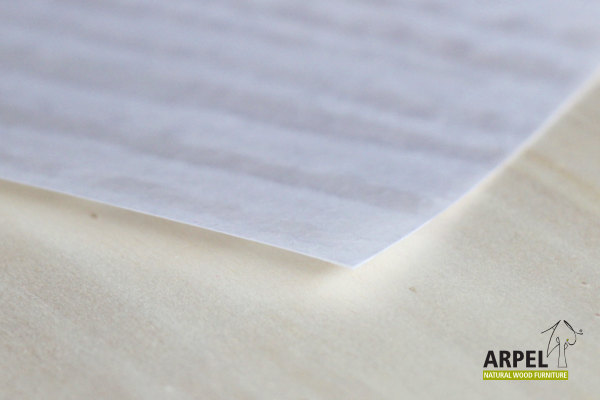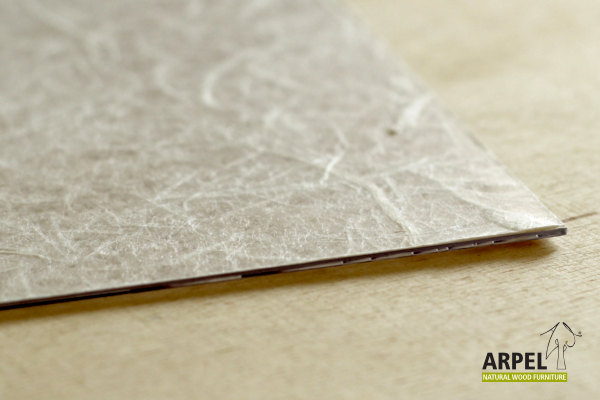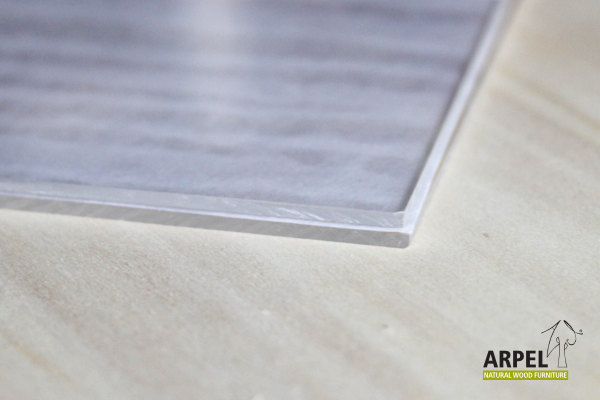No products
- Bedroom Furniture
- Japanese beds, box beds, bookcase beds, loft beds
- Japanese bedside tables
- Futon and Tatami
- Tatami floors
- Futon Mattresses
- Fitted Wardrobes
- fitted and walk-in wardrobes
- Japanese sliding doors
- Japanese cabinets
- Elegant chests of drawers in solid, ecological beech wood
- Origami ecological furniture series
- Living room furniture
- Bookcase with japanese doors
- Sofas and transformable futon armchairs
- Japanese screens
- Custom works
- Photo gallery of japanese style custom works
Japanese rice paper
Rice paper is traditionally used in Japan to coat doors.
We import high quality washi rice paper from Japan (Washi rice paper - Certificate of originality) and we use it to coat the sliding doors of cabinets and wardrobes.
Application methods of the japanese rice paper
According to how it will be used, there are several possible application methodos. Arpel will help you choose the right one for the sliding doors of your piece of furniture
Japanese rice paper with double-sided PVC coating
The plasticized Washi papers are protected by a double plastic (PVC) layer. Usually they are used without any other support resulting in very light doors. This coating is defined as semi-washable and is suitable for 19, 26 and 32 mm thick doors. Although these doors are very resistent, if you wish to give your shoji door more protection, we can add a thin transparent plastic support behind the washi paper. Find out more about the washi and polycarbonate layer below.
Japanese rice paper on rigid polycarbonate layer
The white fiber rice paper (001) is treated with a special water-based liquid and glued on a 1 mm thick transparent polycarbonate panel. It is then uniformly sprayed with a water based vitrifying product to be further protected. It's also possible to request the double-sided PVC coating rice paper with this extra polycarbonate support; in this case however, the PVC washi paper is simply laid in place without applying glue.
The rice paper (001) treated in this way mantains a natural feel as it is not covered with PVC. One may still feel it’s natural roughness but it is at the same very strong and shock resistant. This makes it perfectly capable of contrasting the pressure from clothes inside the wardrobe. This coating is defined as semi-washable and is suitable for 19, 26 and 32 mm thick doors.
Japanese rice paper on plexiglass
For 40 mm thick sliding pocket doors for bathrooms and kitchens, we generally use a rice paper on a 4 mm plexiglass layer. The white-fiber paper is normally glued on the plexiglass layer, while the double-coated PVC paper is normally applied without glue.
Japanese rice paper between to plexiglass layers
For 40 mm thick sliding pocket doors for bathrooms and kitchens, we also generally use a rice paper inserted between two 3+3 mm plexiglass layers. In this case the rice paper does not need to be glued. This solution can be also used on 32 mm doors with a double sided wood grid. The plexiglass layers on either side of the rice paper are slightly thinner than the classic panels we use as support (2+2 mm).
The japanese rice papers can have different textures:

001 white fiber 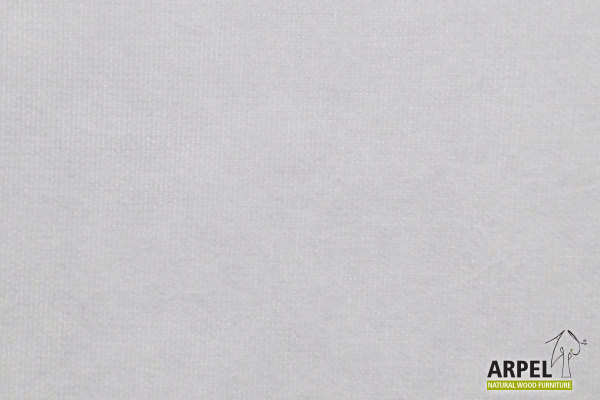
2 PVC-coating 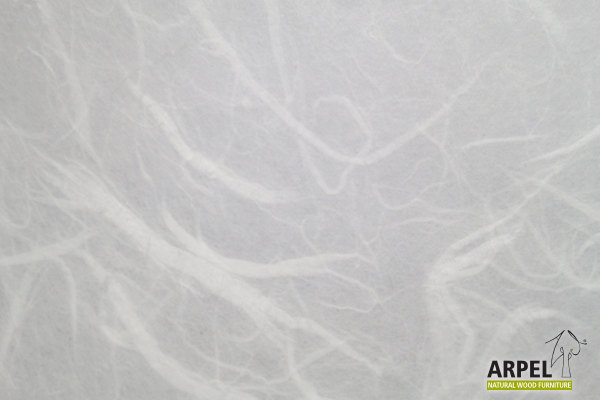
102 PVC-coating 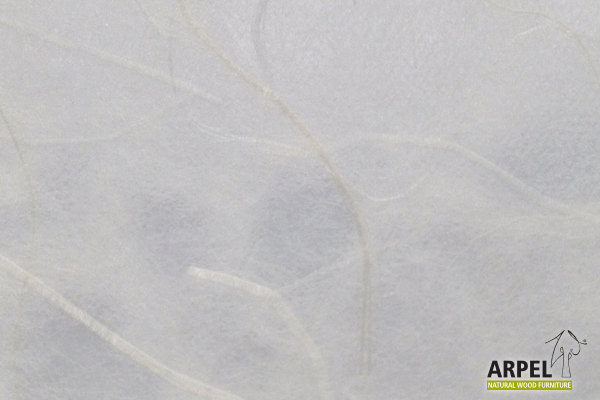
104 PVC-coating 
105 PVC-coating 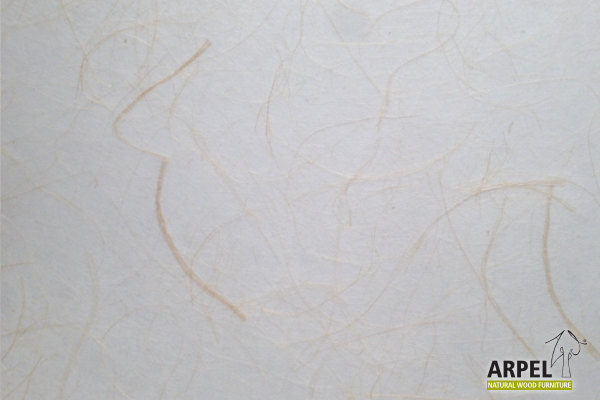
106 PVC-coating 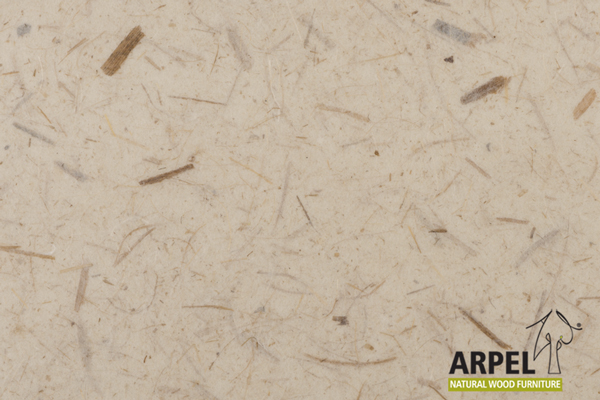
107 PVC-coating 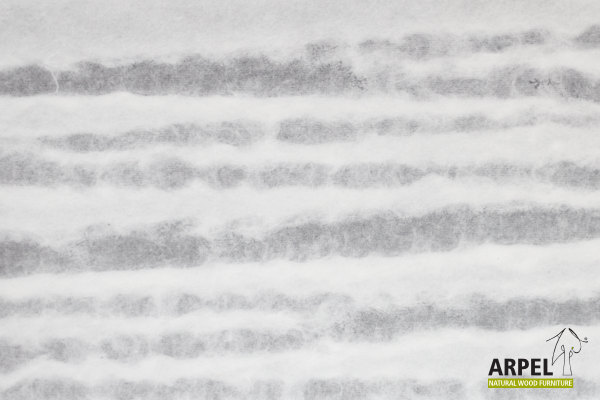
108 PVC-coating 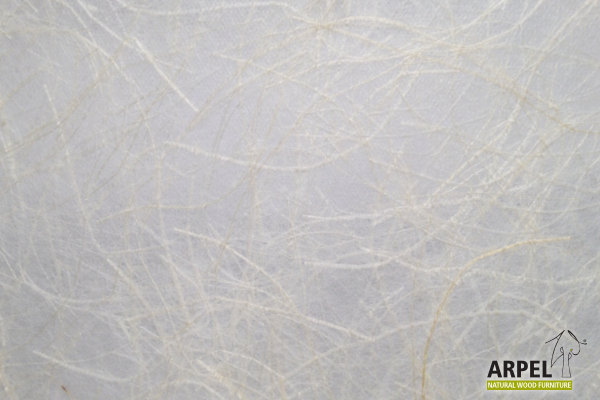
rice paper 110



